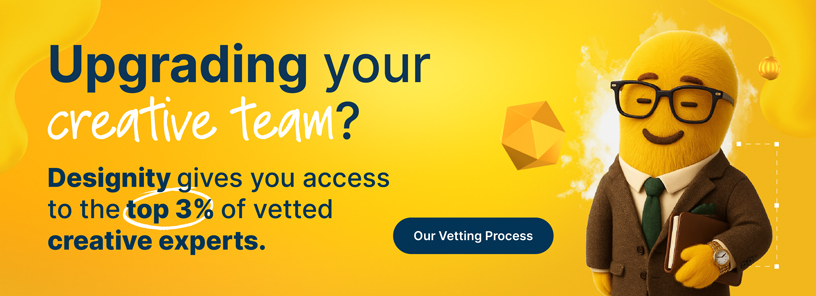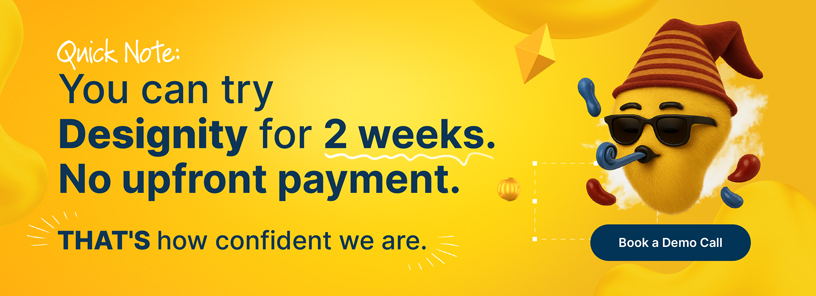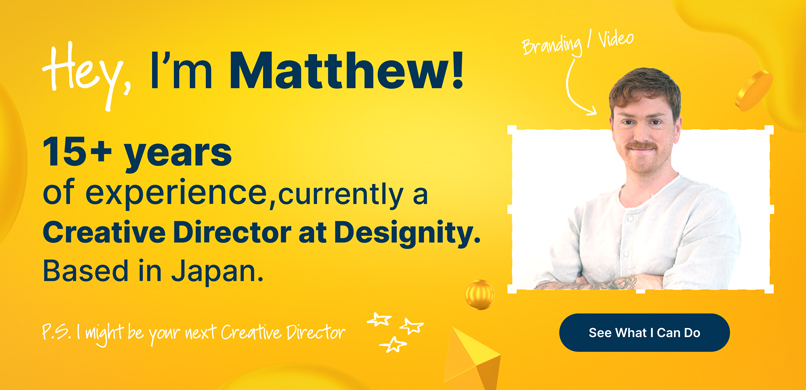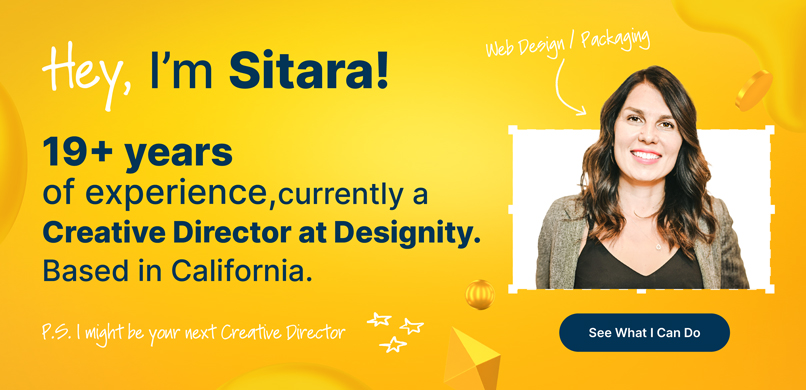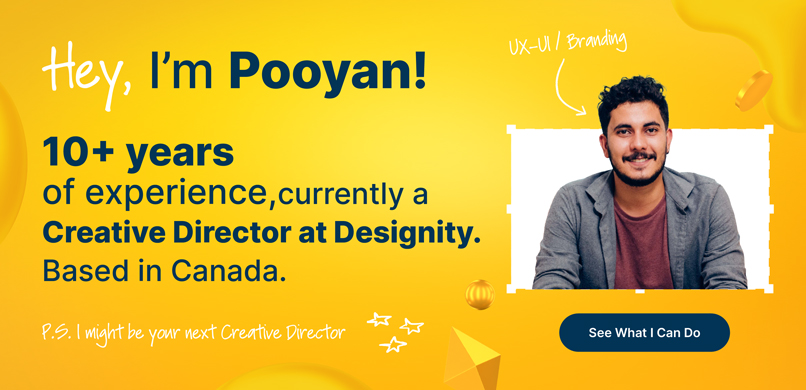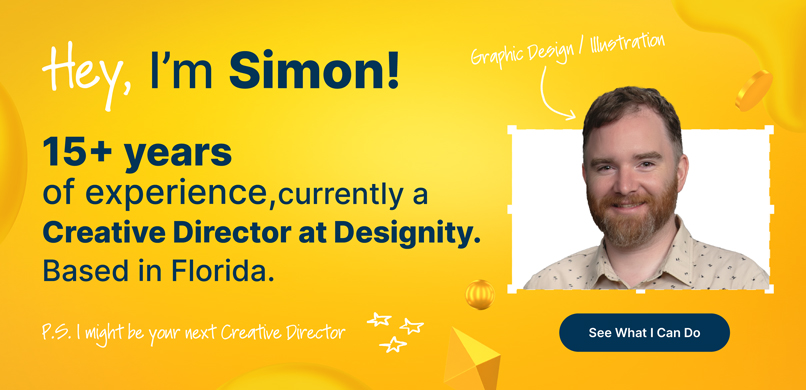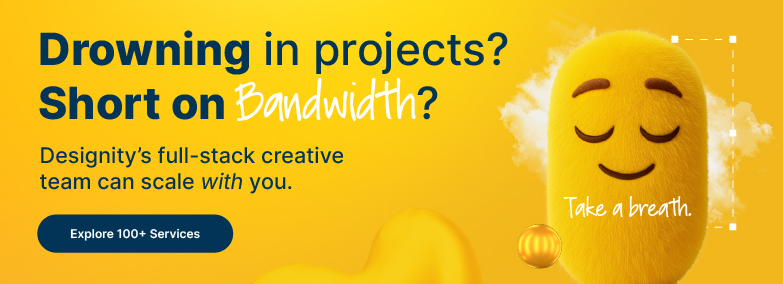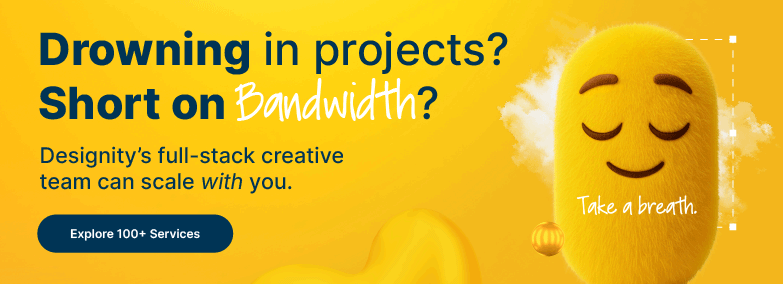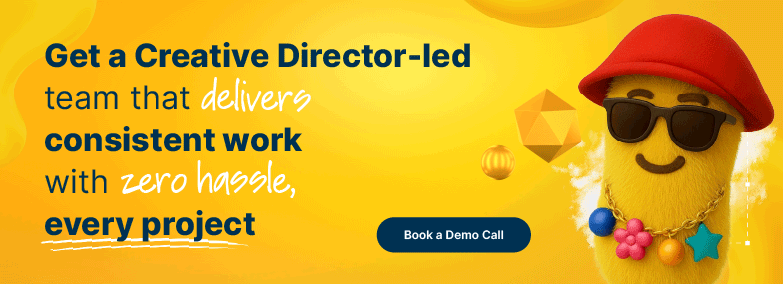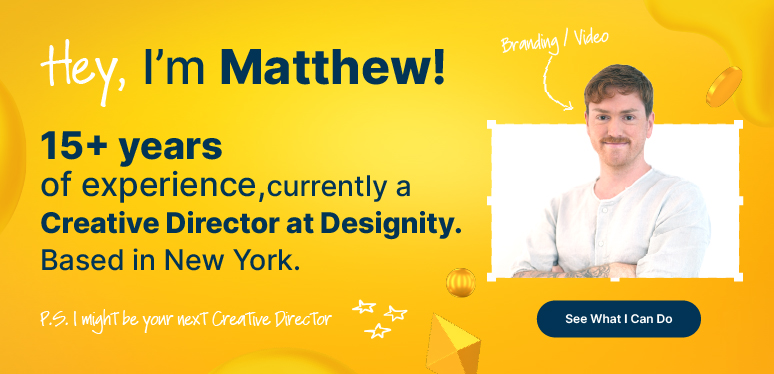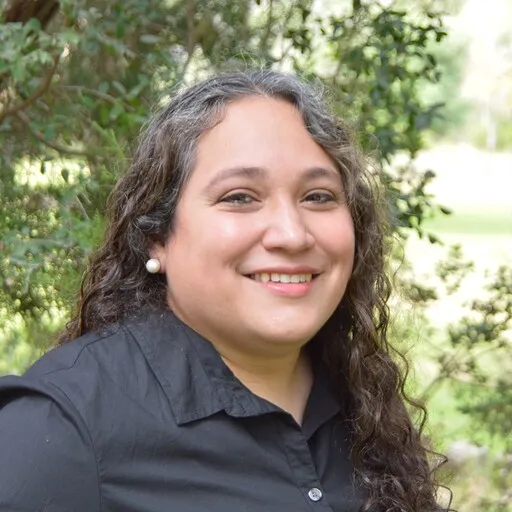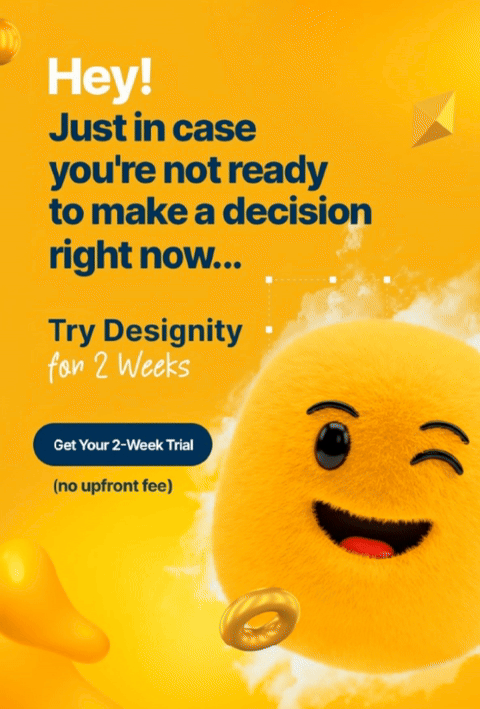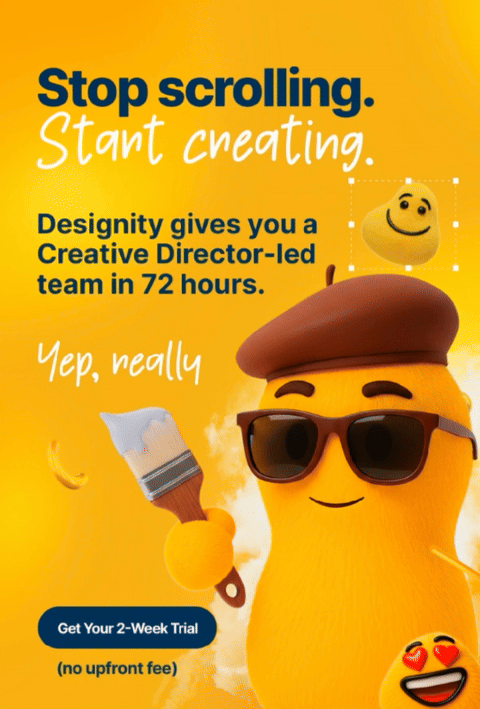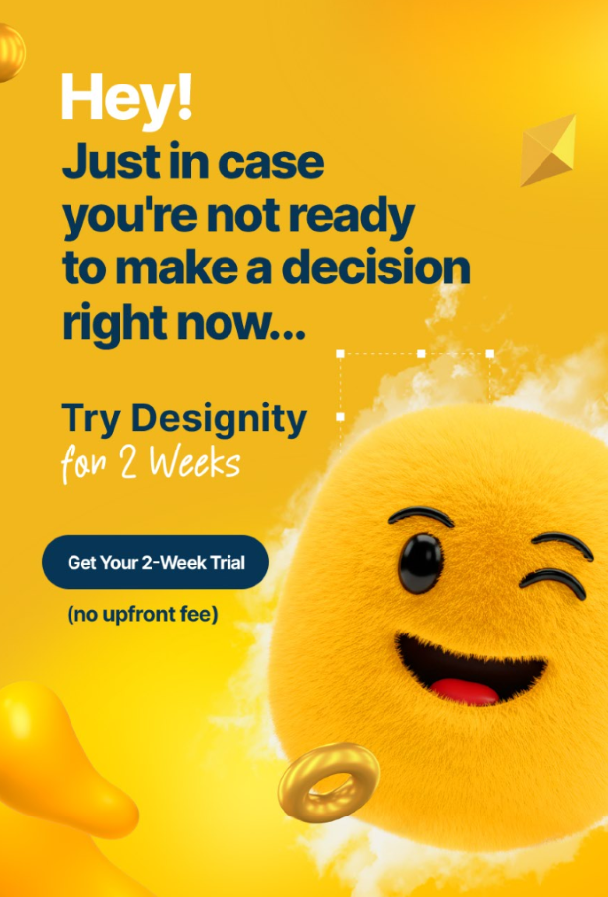Giving the right feedback is the only way to get great results on a project — but for those on the creative side of things, it can often get … well, a little personal.
That’s because creativity is vulnerable. Your work is an extension of yourself; your ideas, your style, your vision. So, when the feedback comes in and it’s not great (even if it’s given with the best of intentions), it can often feel like a personal critique of you, not just your work.
On the flip side, when it’s time to give feedback … well, that can be a little tricky too?
How do you stay honest and direct with your colleagues without accidentally stomping all over someone’s creative spirit?
If just the mere thought of getting and giving feedback is enough to put your stomach in knots, you’re not alone! Mastering the art of feedback is one of the most important skills a creative professional can develop!
So, if you’re ready to take the awkwardness out of feedback, then today’s blog is for you! Today, we’re breaking down exactly how to give and take feedback like the pro that you are … and actually feel good about it!
Let’s get started!
How to Give Feedback Like a Pro
.webp)
Whether you’re working with a designer, a writer, a strategist, or a video expert, the way you deliver your feedback can make all the difference between a stronger project and one that’s stalled out (or tense!).
Here’s how to do it the right way:
1. Focus on the Work, Not the Person
Be sure to keep your conversation centered on the project, not the individual who created it.
Critiquing someone’s design choices is fair play; critiquing them as a person? Definitely not.
Example: Instead of saying “Did you even read the project brief?,” try something like, “This layout would better match the project goals if we adjusted the hierarchy and highlighted this section.”
2. Be Specific and Actionable
Every designer has heard vague feedback from a client, like “It needs to pop,” or “It’s missing something.”
Don’t be part of the cycle! “Make it pop” is not feedback. It’s confusing.
Clear notes that a creative can actually take action on are much better for improving work.
Example: “The headline could be stronger if you adjust it to speak directly to the customer's pain points, like XYZ.”
3. Balance the Positive with the Constructive
Nobody wants you to dance around the point and offer nothing but sugar-coated nonsense — we’re not saying that.
But at the same time, pencil-diving straight into the criticism without acknowledging any of the hard work or what’s going right can shut a creative down fast.
Aim for a genuine balance that highlights what’s successful and points out where improvements can be made.
Example: Instead of saying, “The whole layout feels wrong,” try something like, “The color palette is working well. Now let’s refine the layout so it better guide’s the user’s eye.”
4. Don’t Put it Off
The best feedback is often given right away, while there’s still plenty of time to act on it.
If you put it off and wait until the final round of revisions to mention a huge problem, that’s a great way to derail a project (and cause some serious tension).
Give feedback as early as possible, and always tie it back to the project’s goals, audience, or brand guidelines to keep it productive and actionable.
How to Take Feedback Like a Pro
.webp)
Giving feedback can be an art form —and some folks are naturally better at it. But learning to take feedback? That’s a skill that can be worked on and, for many creatives, it’s one of the hardest to master.
Here’s a few tips on how to level up your game:
1. Listen (And Don’t Get Defensive)
No one likes having their work or ideas shot down.
And your first instinct might be to explain yourself, defend your decisions, or even shut down, but resist the urge.
Listen fully, even if the feedback stings. You don’t have to agree with everything, but understanding where someone is coming from (especially if they’re the ones using your work for their businesses), is the first step to a better project and a happier client.
Pro Tip: Try not to think of feedback as a verdict on your talent or abilities. Instead, think of feedback as just another piece of data. It’s information you can use to make your work better.
2. Ask Questions
If the feedback feels vague (and if it’s coming from a non-designer, it probably will), then don’t guess what it means.
Ask for specifics!
If a client tells you something like, “It needs more energy,” then try asking some clarifying questions to get a better understanding of what they mean.
Examples:
- Can you tell me what part is feeling flat to you?
- Is there a brand reference you’re picturing for this?
- Do you have an example of something similar that captures the vibe you’re going for?
- Is there anything here I should keep when I revise it?
The better you understand the feedback, the better you can address it!
3. Separate Emotion from Action
It’s okay to feel a type of way when you get negative feedback.
Creativity is personal, after all, and you worked hard on that draft! But when it’s time to revise your work, focus on the actionable steps you were given, not how you feel about the critique itself.
Take a few minutes to process if you need to, then come back with a clear head and start making that project better!
4. Know When (and How) to Push Back
Feedback doesn’t necessarily mean that you have to agree with every suggestion that’s given.
If you believe strongly in a creative decision you’ve made, it’s okay to advocate for it. Just be sure that you do so respectfully.
For example:
“I understand that concern. Here’s why I approached it this way. But I’m open to exploring alternatives if need be.”
Pushing back with professionalism shows that you’re thinking strategically, and not just emotionally.
Tips for Building a Feedback-Friendly Creative Environment
.webp)
A culture where feedback feels normal — and even welcome — doesn’t just happen on its own.
If you want to be part of a creative team that communicates well, collaborates openly, and is constantly improving, then you need to help build a team environment where feedback is safe, supported, and part of the everyday process.
Here are some ways to make that happen, no matter what role you play on the team:
- Be open to feedback — and show it — If you’re willing to take feedback with curiosity (not defensiveness), others will feel more comfortable doing the same. Example: When someone gives you a note, thank them and ask a follow-up instead of jumping to explain.
- Make feedback a regular thing — The more often you give and receive feedback, the less awkward it becomes. Example: Add a quick “What’s working / What’s not landing?” moment during reviews or check-ins.
- Give feedback to your peers, not just managers — Great teams support each other — not just from the top down. Example: If you see something cool in a teammate’s work (or something that could be stronger), say something!
- Call out helpful feedback when you see it — If someone gives a great note, let them know! It encourages more of that and makes everyone feel like their voice matters. Example: “That was such a helpful catch — I wouldn’t have seen that!”
- Be clear about what kind of feedback you want — It’s easier for people to help when they know what you’re looking for. Example: “I’d love notes on the structure and flow — the visuals aren’t final yet.”
- Give space to process — Not all feedback needs an instant response. Give others (and yourself) time to reflect and ask questions. Example: “Totally hear your notes — I’m going to sit with them and come back with a few ideas.”
<div class="c-blog_comp-cta cc-component-2"><div class="c-blog_comp-cta-left"><div class="c-blog_comp-cta-left-wrap"><img src="https://global-uploads.webflow.com/61cdf3c5e0b8155f19e0105b/63695243d096983691046ac3_Potential-Creative.png" loading="lazy" alt="" class="c-blog_comp-cta-left-img"></div></div><div class="c-blog_comp-cta-right cc-dark"><div class="c-blog_comp-content"><div class="c-text-wrapper cc-mb-32"><div class="c-title-4 cc-bold"><strong>Like to work as a freelancer with consistent income?</strong></div></div><div class="c-text-wrapper"><div class="c-text-2">Designity's collaborative model is designed to give you all of the perks of being a freelancer without the income instability.<br></div></div></div><div class="c-blog_comp-wrapper"><a href="http://designity.com/creatives" target="_blank" class="c-button w-button"><strong>Join Our Creative Community</strong></a></div></div></div>
Feedback: The Skill That Your Creative Future Depends On
Remember, the ability to give and receive feedback well isn’t something you’re just born with.
It’s a skill, and if you feel like you aren’t great at it now, then that’s okay! With time and practice, you can get better!
The more you practice clear and thoughtful feedback, the stronger your work relationships and collaborations will become. And the more open you are to receiving feedback yourself, the faster your skills and your confidence will grow!
At the end of the day, feedback isn’t about someone tearing down your ideas or attacking someone’s hard work. It’s about making that work better, together.
So, next time you’re faced with giving or getting feedback, take a breath, lean in, and remember:
You’re not just shaping a project, you’re shaping your creative future!
Are you ready to take your creative skills and feedback game to the next level?
Whether you’re looking to grow in your career, step up into a leadership role, or just create your best work yet, Designity connects talented creatives like yourself with plenty of opportunities to collaborate with the best, learn, and level up their skills!
Think you’re up for it? Put your skills to the test with our one-of-a-kind application and let’s see where Designity can take your creative career!
.webp)



